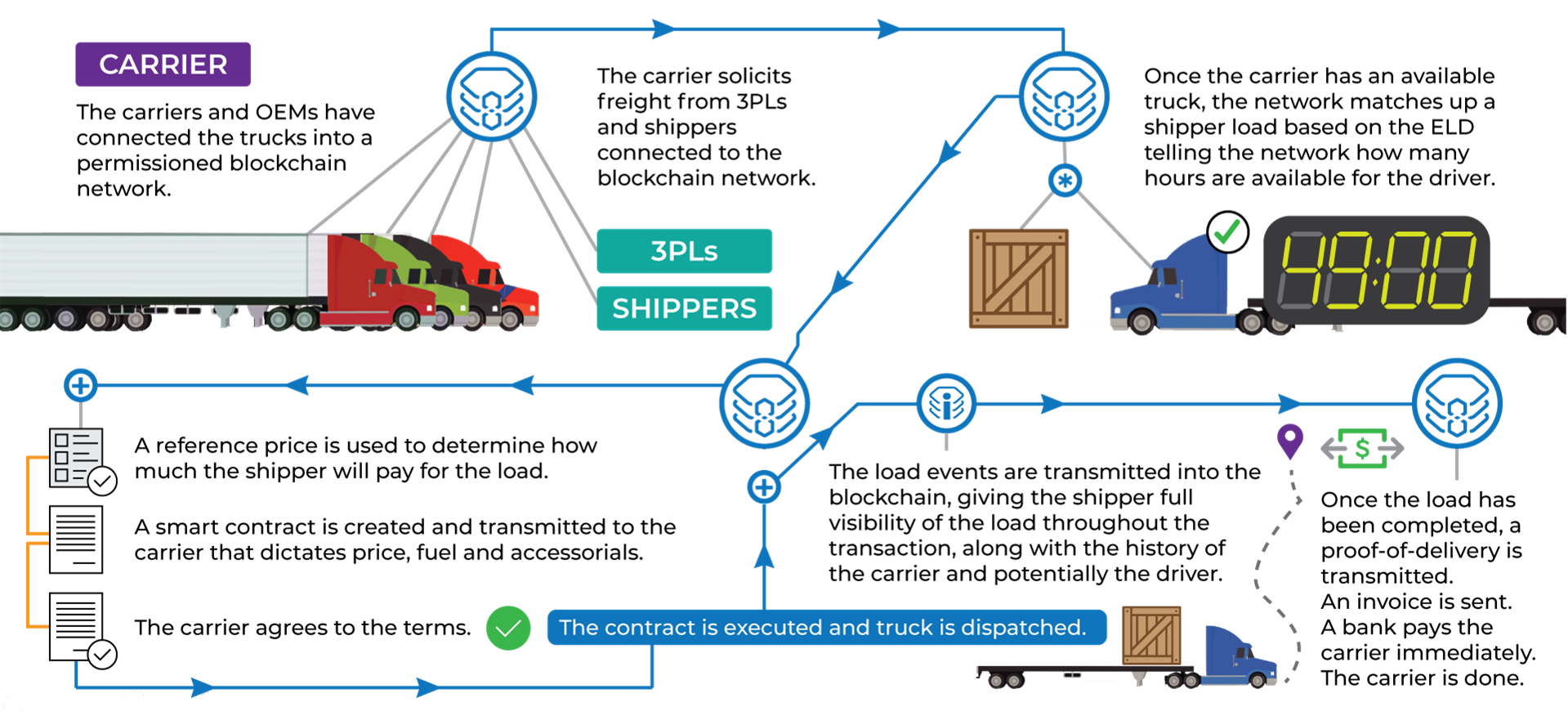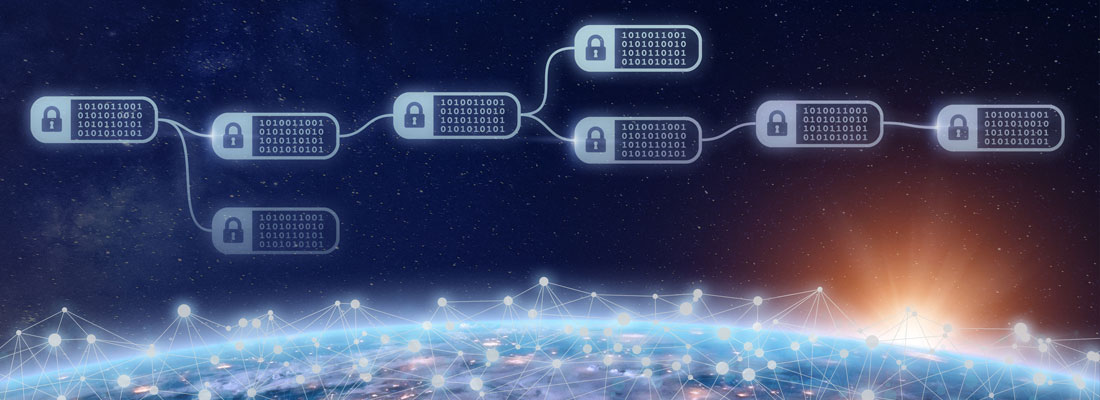Everyone has been talking about blockchain technology lately. The topic has made headlines around the world. We’ve
been hearing about this innovative technology that could literally revolutionize how we do business. What does it
mean, in concrete terms, for the transportation industry? How could blockchain affect operations? Before we look at
the possible impact this technology could have, let’s see what it actually is.
What is blockchain?
It’s a basic question, but one that will help us get a better grasp of blockchain technology application. In essence,
it is a way of storing information. Blockchain is often compared to a large, incorruptible ledger of economic
transactions. It is a series of interconnected blocks of information, with each block holding a single transaction.
What makes the blockchain so unique is its high level of security. The entire set of linked blocks forms a register,
or blockchain. These registers are reliable, secure, transparent, and accessible.
What makes blockchain secure?
A blockchain is, in a manner of speaking, the DNA of data. Altering or editing information is very difficult. Once an
operation is included in a block, it is permanently recorded. Every block is time-stamped, which makes it possible to
prove the existence of records at any given point in time. Blockchain follows a chronological sequence. When there is
new information, the link to preceding blocks is retained, and copies are kept in all participating systems. These
multiple copies make the information failure-resistant. When a block is altered, it disconnects the chain, affecting
every other block.
How could blockchain affect the transportation industry?
The implementation of blockchain is on the horizon, but we still have several years to go before it becomes an
integral part of our daily operations. However, once the technology is adopted and standardized, it will affect the
transportation industry in various ways. The following scenario describes the impact of blockchain on trucking.
- Carriers and original equipment manufacturers connect trucks to a permissioned blockchain network.
- Carriers solicit freight from 3PL (third-party logistics) providers and shippers connected to the blockchain
network. - Once the carrier has a truck available, the network matches up the shipper’s load based on the electronic logging
device that provides the driver’s available hours of service. - A reference price is used to determine how much the shipper will pay for the shipment.
- A smart contract listing the price, fuel, and incidental costs is generated and sent to the carrier.
- The carrier accepts the contract terms. The truck takes the road.
- Thanks to the blockchain and transactions, the shipper can track every event related to the shipment.
- Once the load is delivered, proof of delivery is provided. The invoice is sent and the bank pays the carrier
immediately.

Blockchain could increase transparency and efficiency among stakeholders throughout the supply chain. The technology
would also reduce administrative work and exception management.
To learn more about blockchain, click to watch the conference presented by expert Daniel Pickett at a Lunch and Learn event organized by ISAAC.
Sources: Document: Technological Disruption of Capital Markets and Reporting?: An Introduction to Blockchain, CPA
Canada
Photo credit: Blockchain in Transport Alliance (BiTA)

